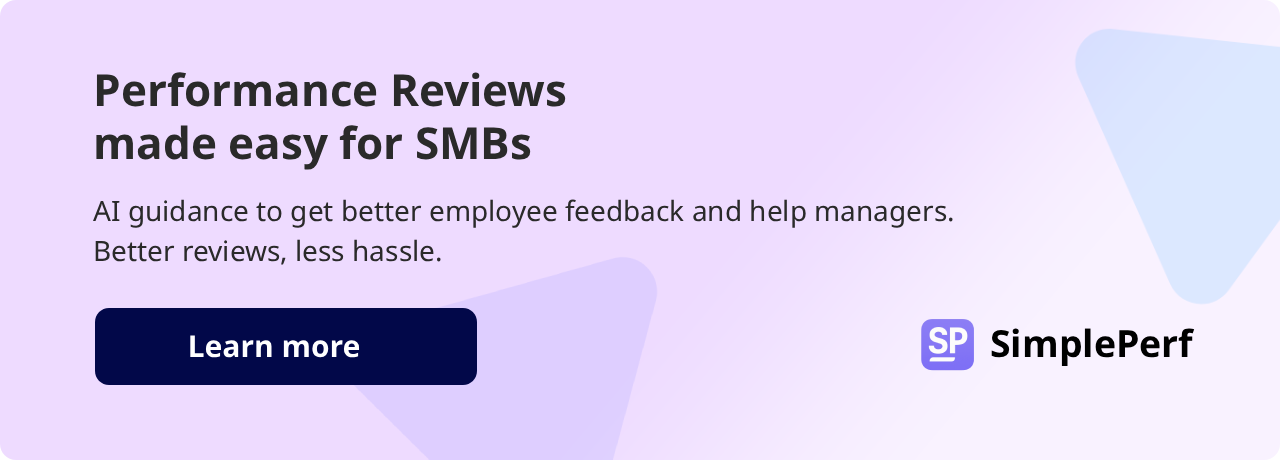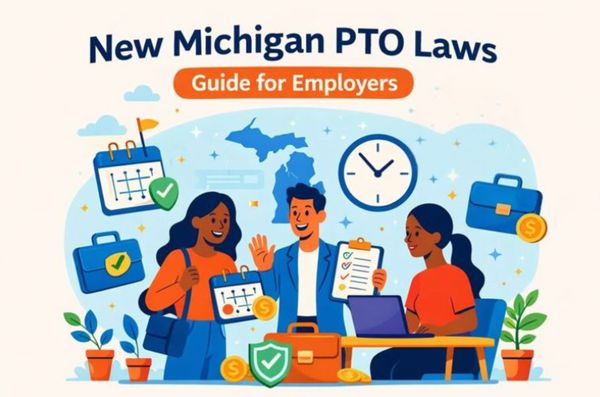Compensation plan examples and templates for SMBs
Use our examples to design a compensation plan that balances direct pay and benefits, attracts talent, retains employees and ensures fairness. Free PDF template.

Attracting and keeping top talent has never been harder for SMBs. Big companies can outspend you when it comes to wages and perks, and your workers are continually looking for better opportunities in a tough financial climate.
It's a tension every business owner feels but the good news is that you don’t need a Fortune 500 budget to keep your star performers - you just need a well-structured compensation plan, and we’re here to help you create one.
If you want the short version, the key takeaways are next.
Key Takeaways:
- A compensation plan defines salary, bonuses, and benefits, giving SMBs a structured way to compete with larger employers.
- Applying compensation fairly and transparently helps SMBs retain talent, and align pay with business goals.

Table of Contents
- What is a compensation plan?
- Why you should have a written compensation plan
- Example of how to create a compensation plan with four core elements
- Compensation plan examples you can apply now
- Ready to use compensation template for SMBs
- Stuck, wondering what to offer? Get input from your existing employees
What is a compensation plan?
A compensation plan is a formal, documented strategy that outlines all the rewards employees receive from their employer. Typical compensation packages include base pay, bonuses, commissions, health insurance, retirement plans, and other perks. What you offer as an SMB will depend on the industry benchmarks and the kind of talent you want to attract and keep.
Done right, a compensation plan provides fairness, consistency, and clarity - key factors for keeping employees satisfied and engaged in their jobs and the workplace. According to one global salary transparency survey, targeting seven countries, 70% of workers believe salary transparency is good for business.
Why you should have a written compensation plan

Having employee compensation written down means everyone in the company is guided by the same compensation philosophy. Employees know what to expect, managers can avoid bias, and leadership can calculate total compensation for the company.
As an SMB, you don’t have the luxury of a big HR team, but you can still create a competitive compensation plan, and you should do this for the following reasons:
- To streamline payroll and reduce manual errors, consider using tools that generate custom paystubs fast. This ensures employees receive accurate documentation quickly, even if your HR team is small.
- Your job offers will be more competitive when you can outline the total employee compensation package.
- Incentives, such as performance bonuses, give employees a shared interest in the success of your business.
- A formal plan reduces favoritism in pay decisions.
- Plans can be structured to align with revenue goals.
- Talented workers like pay structures that are clear, fair, and applied equitably.

Example of how to create a compensation plan with four core elements
1. Compensation Philosophy
The compensation planning process begins by establishing how you will position yourself against your competitors in the marketplace. Whether you recognize it or not, your competitors are working hard to make their employee total compensation package better than yours - so be smart and ask yourself:
- Will you lead with top-tier pay, or match the average?
- Will you stand out with employee benefits such as healthcare, retirement savings plan, and tuition reimbursement?
- Will you offer variable pay (such as commissions) or fixed monthly salaries?
- How will you create pay equity amongst your employees?
2. Job structures and levels
Create role classifications, such as entry-level, mid-level, senior, and executive positions, with corresponding pay ranges to motivate employees. Benchmark these role levels using data gathered by the U.S Bureau of Labor Statistics, which provides data for over 800 occupations across 400 industries.
Example: For the sales profession, the data shows a mean hourly wage of $27.42 and a mean annual wage of $57,030. This data will help you set competitive salaries.
3. Define direct and indirect pay

A comprehensive compensation plan requires that you clearly define both categories of pay. Here’s the difference:
- Direct pay: Base salary/hourly wages, commissions, variable pay, bonus pay, profit sharing, stock options.
- Indirect pay: Health benefits package, retirement, paid time off, wellness stipends
By documenting your compensation program, you can compete with larger employers even if you can’t match the base salaries to attract and retain top employees.
Need help setting pay benefits? Take a peek at national averages: Employer costs for employee compensation - March 2025
4. Review and governance
Good compensation management requires you to document pay transparency laws and how you apply them in your business, how often you’ll review the plan, who approves adjustments, and how raises are determined.
Compensation plan examples you can apply now
Before we get to a compensation plan template, we should take a look at typical compensation structures to get a feel for how you will incentivize employees.
Need HR tech to connect performance and pay? Explore our recommended list for SMBs: People Ops picks: The best performance review software for small companies
💡Point of interest: According to Payscale’s 10th annual salary budget survey, the most popular types of benefits are merit increases, promotional increases, and salary structure increases.
Ready to use compensation template for SMBs
This template helps small and medium-sized businesses develop a comprehensive compensation plan that aligns with company values and aims to attract top talent. The plan offers a wide range of potential benefits that can be tailored to suit your company's needs.
💡Top tip for SMBs: If you can’t match the base salaries of your competitors, get creative. Use other benefits such as paid time off, meal plans, recreational memberships, and tuition contributions to your advantage. Offering bonuses based on company performance also works!
Let your people guide your compensation plan

Even the most carefully selected compensation plan can miss the mark if it doesn’t reflect what your employees really value. So why not just ask them?
If you include your employees before settling your compensation policies, you’ll increase the transparency and their trust in what you’re trying to do. Your choices should not only reflect industry standards but also resonate with the needs of your employees. Some employees may prioritize healthcare, while performance-linked incentives drive others - this will be valuable information.
You can obtain this feedback quickly by setting up Pulsy Survey and receiving results with automated reminders. With Pulsy’s consolidated data report, you’ll be able to see results as they come in and understand what your people really want while you worry about balancing the budget.
Conclusion
A well-documented compensation plan is for all companies, even if you’re an SMB. This isn’t just the domain of HR professionals - it’s your right as a business owner to set this plan. If you do, you will be in control of how you remunerate your employees and empower your business to attract the top industry talent.
We’ve covered the four key elements you need in your plan, and given you examples and a template to start you off on the right track. Now it’s your turn.
👉Get started with our free compensation plan template:
Frequently Asked Questions
1. What are the three main types of compensation plans?
The three most common types are the straight base salary plan, the straight commission-based plan, and a salary plus commission.
2. What’s the difference between a salary structure and a comp plan?
A salary structure sets pay ranges for specific roles, while a compensation plan covers the entire rewards package, including base pay, incentives, and benefits.
3. How often should SMBs review compensation plans?
At least once a year. Many SMBs do a bi-annual review to keep pace with the changing demands of the economy, inflation, and rapid company growth.
4. What tools can help me with compensation benchmarking?
Salary survey data, such as that from the U.S. Bureau of Labor Statistics, is a good start. Private companies like Payscale, Mercer and Radford also conduct annual salary surveys.
5. How transparent should SMB compensation plans be?
Increasingly, workers are calling for salary ranges for different job roles to be made public and for additional benefits to be transparent. This serves not only to increase transparency but to motivate employees to chase better-paying job roles.





